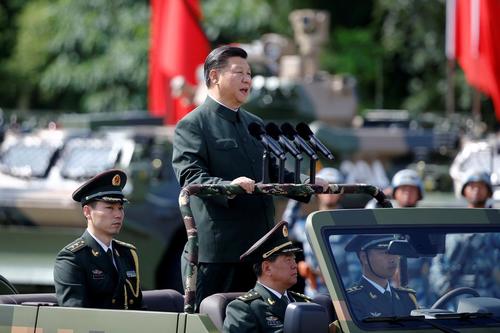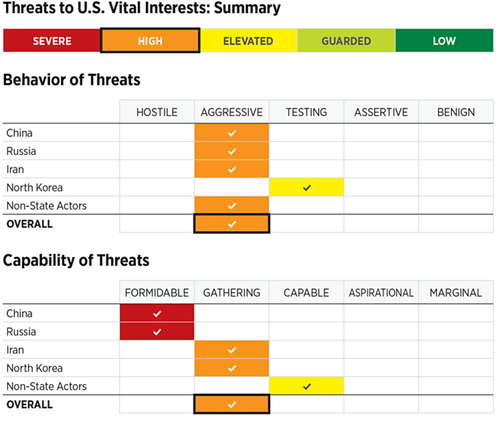by TYLER DURDEN
It appears we could already be in the midst of the ‘new Cold War’ arms race that many world leaders have been warning about, as President Xi Jinping this week is calling for China to ramp up efforts to “break new ground” in weapons and military equipment development.
This after the Biden administration described the US being in a state of current “strategic competition” with its top most powerful rival of China. According to Reuters, Xi addressed a military conference Tuesday wherein he called for a “new situation” in the weapons industry toward rapidly kickstarting greater support for the production of the armed forces’ needs.

His words come after US military and intelligence officials recently expressed shock and surprise, saying they’ve been caught completely off guard, by reports that China successfully tested hypersonic weapons in August. In Washington this week, chairman of the Joint Chiefs of Staff Mark Milley dubbed it almost “a Sputnik moment” in terms of historic importance and making a huge leap beyond current US capabilities.
Xi during this speech at the military conference seems to agree:
China’s strategic capabilities had been enhanced by “leapfrog development” in military equipment and weapons, said Xi Jinping.
Zhang Youxia, vice chairman of the CMC, also said that China should pursue self-reliance in technology and make an “all-out” push to accelerate modernization and build a “world-class” army, according to the report.
At the same time a new extensive report produced by the Washington-based conservative Heritage Foundation has rated current US military readiness as merely “marginal” compared to the threats it faces.
Here’s what the think tank’s 2022 Index of U.S. Military Strength concluded of overall US military strength after a review of all military branches:
In the aggregate, the United States’ military posture continues to be rated “marginal” and features both positive and negative trends: progress in bringing some new equipment into the force, filling gaps in manpower, and rebuilding stocks of munitions and repair parts alongside worrisome trends in force readiness, declining strength in key areas like trained pilots, and continued uncertainty across the defense budget that is now having a negative effect both on major acquisition programs and on installation-level repair capabilities.
The 2022 Index concludes that the current U.S. military force is likely capable of meeting the demands of a single major regional conflict while also attending to various presence and engagement activities but that it would be very hard-pressed to do more and certainly would be ill-equipped to handle two nearly simultaneous MRCs—a situation that is made more difficult by the generally weak condition of key military allies. The presidential decision to withdraw forces from Afghanistan might provide some breathing room for force recovery but only if other operational demands do not retask the military services.
China is meanwhile presented in the report as currently “the most comprehensive threat the US faces.”
In a summary section of threats, the report reads:
China is the most comprehensive threat the U.S. faces. It remains “aggressive” in the scope of its provocative behavior and earns the score of “formidable” for its capability because of its continued investment in the modernization and expansion of its military and the particular attention it has paid to its space, cyber, and artificial intelligence capabilities. It continued to exercise its first domestically produced aircraft carrier, commissioned in December 2019, and construction of its second continues.
The People’s Liberation Army continues to extend its reach and military activity beyond its immediate region and engages in larger and more comprehensive exercises, including live-fire exercises in the East China Sea near Taiwan and aggressive naval and air patrols in the South China Sea. It has continued to probe the South Korean and Japanese air defense identification zones, drawing rebukes from both Seoul and Tokyo, and has been especially aggressive in sailing and flying through the seas and airspace around Taiwan.
More from the 2022 Index of US Military Strength by Heritage pic.twitter.com/gQrvTVVLKk
— Jeff Seldin (@jseldin) October 20, 2021
Given the recent establishment of CIA’s New China Center as a major stand alone department, reflecting a shift in US intelligence community priorities from the Middle East to East Asia and China’s growing capabilities, it appears that US intelligence officials agree with the above assessment of the PLA military’s “formidable” capability.






